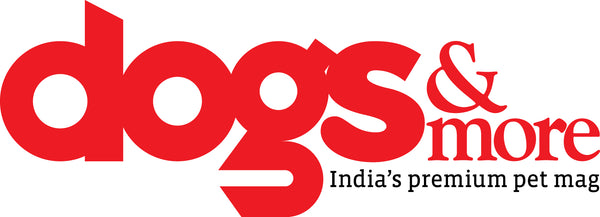Many pet parents try to find a balance between dry, canned, wet, raw, and home-cooked food, as these are the major types of dog food that are right to feed. Finding the sweet spot between these options is a journey for every parent, as no dog eats or digests the same food in the same way.
Dogs don’t understand what food is the right nutrition for them and how much should they eat since they gobble up almost everything they set their sights on. Dog parents face many sources who advise many and often confusing food options. Ghar ka khana is often seen as the holy grail of Indian dog food. But what we feed ourselves, might not necessarily be the right or completely balanced nutrition for dogs.
So how do you select the right dog food?

“ Ooh, that’s a good question”
The Science of Dog Food
Dog food is not rocket science but it is science. The right nutrition for every dog depends on their breed, size, life stage, and gender among other factors. E.g. according to AAFCO (Association of American Feed Control Officials), a puppy needs between 22-32% more protein than an adult dog which requires only 18%.
Based on their breed, a puppy grows the most in their first week of birth followed by gaining an average of 5-10% weight until 8 weeks of age. Sometimes larger breeds go through a second spurt of growth around 6 months of age. Hence, they need more immunity-boosting and growth-inducing nourishment.
A mother dog needs 1.5 to 3 times the nutrition of an adult male dog depending on her breed and the size of her litter. Hence, she needs more protein and fats to nurture new life.
Any dog food should provide the essential building blocks for the optimum health of every type of dog. And remember, human food is not always right for dogs as their digestive system is very different from ours. So what should you feed them?
The 6 Pillars of Right Nutrition
AAFCO states that there are essential nutrients are required to support life and function in every dog. These are-
- Protein
- Carbohydrates (including fiber)
- Fats
- Vitamins & Minerals
- Water
- Essential Nutrients
Why Are These 6 Pillars Important
Protein- The essential amino acids that a dog gets from its protein intake assists in maintaining good skin & coat health. It’s also important for generating hormones, antibodies & enzymes in a dog’s body.
Carbohydrates- Grains & vegetables are the main sources of carbohydrates and every dog needs to have them included in its daily diet for getting sugar, starch, and fiber. As dogs are omnivores, they don’t have a real need for vegetables and fruits but they can be given for fibrous needs or as snacks. They are necessary for maintaining the intestinal health & power of the tissues in your dog’s body.
Fats- Apart from helping maintain your dog’s skin & coat health, fats serve as the main source of a dog’s energy. Fatty acids promote the repair & growth of skeletal muscle tissue. The most important fatty acids for a dog are- Linoleic Acid, Omega-6 & Omega-3.
Vitamins & Minerals - A proper balance of all minerals & bioavailability of minerals in the dog’s food is necessary for cartilage formation, enzymatic reactions, transportation of oxygen in the blood, nerve function & even the production of hormones. Dogs make their Vitamin C internally. It’s wrong to give extra calcium just because the dog is growing up too fast.
Water- Water is just as important for animals, as it is for humans. To the extent that it becomes life-threatening if they lose 10% of the water in their body. Even though canned dog food has a lot of water in it, it’s not enough for a dog. This is why fresh, clean water should always be available at your dog’s disposal. Commercial dog food or dry kibbles should also pack moisture content.
Essential Nutrients- Every dog’s body makes 13 out of the 23 amino acids that serve as a foundation of protein intake. The remaining 10 need to be acquired from their daily diet.
How To Portion Control
Regardless of how you proportion your dog’s food, it should be a balanced diet consisting of 40% protein, 50% vegetables, and 10% starch. It is recommended to feed your dogs dry food over canned food as the latter usually contains 70% water and won’t be enough to provide the right nutrition to your pooch.
Before choosing good dog food, it’s common practice to go through the label’s ingredient list where the first three ingredients mentioned are the most important of them all. It tells a customer whether the diet is vegetable, grain, or meat-based.
How Much To Feed
First, categorize your four-legged friend based on their size & metabolic rate since the rate at which a dog burns its calories ( metabolic rate ) is different for all dogs.
For eg, a Shitzu won’t have the same diet as a Dalmation & an arthritic dog will move around less, making it expend less energy while an energetic dog will constantly be on the move thereby expending more energy.
For. e.g look at the feeding guidelines below.
Daily feeding guidelines as given on a puppy food label
|
Body Weight |
<4 MOS |
4-6 MOS |
6-9 MOS |
9-12 MOS |
12-18 MOS |
19-21 MOS |
|
< 5 kgs Toy |
||||||
|
5-10 kgs Small |
||||||
|
10-25 kgs Medium |
||||||
|
25-50 kgs Large |
||||||
|
50-70 kgs Extra Large |
||||||
Frequency For Feeding
|
1-3 months |
4-8 months |
9-18 months |
|
4 times daily |
3 times daily |
2 times daily |
These feeding guidelines for puppies are only indicative. This may change as per your pet's requirement or as advised by your veterinarian.
But before implementing any of this, always remember - Don't look at the food label to tell you how much to feed, look at the dog.
Dogs of larger breeds need fewer calories per kilo of body weight, while the small breeds need more, so adjust accordingly.
How To Choose The Right Dog Food
When you go to select any dry food, make sure it's made of Non-GMO food products and contains no added sugar or gluten. If the ingredients list contains anything that ends with ‘ose’ like glucose or fructose, it’s empty calories and not good to feed. Artificial food preservatives, dyes, and coloring are not good for humans or animals alike, so it's best to avoid them. If the dog food changes color over time, it’s usually seen as a good sign as it’s made of natural and fresh ingredients.
Make sure the food is highly palatable. Dogs smell more than humans so the smell should attract them. The kibble should have a texture designed for dogs. The size and brittleness should be optimized for their mouth.
Depending on which life stage your dog is in, it’s essential to devise a food regime suitable for their phase. Therefore, pet parents must optimize their dog’s quality of life by providing them with good quality dog food, as the right nutrition is key to your pet's growth, long-term health, and activity levels, besides good poop.
These expert guidelines exist to ease the confusion of every pet parent and ensure good health and activity levels in every dog. Your dog may do better with certain dry food brands or be fussy and only eat home-cooked food. They could even be allergic to chicken and you may have to substitute it with lamb. There are brands today that take care of every dog’s unique requirement, but finding ‘the one’ is a journey all loving dog parents must take.
About AAFCO

“Hooman, I only eat food that meets the AAFCO guidelines”
The AAFCO or the Association of American Feed Control Officials is a membership organization made of local, state & federal agencies that regulate pet foods. AAFCO is responsible for providing the guidelines that are used by government agencies to ensure the existence of nutritional standards in various pet products.
The AAFCO statement found in packaging emphasizes the essential nutrients that exist in the product along with which particular life stage, breed, and gender the food is appropriate for.
If any product says that they follow the AAFCO Nutrient Guidelines, it means that they are following the updated research on dog food and their nourishment needs. Their research can be accessed by the public at large and will help a dog parent make the right decision.
Did you know that if a dry food dog’s label lists corn as the first ingredient, it’s better than others? Read more on how to read dog food labels here.
Team Wiggles has started an initiative called #BondedByBlood through which we are trying to create an online repository of ready pet blood donors. Register your pet today and save a life tomorrow.
*Disclaimer: This blog is vet-approved and includes original content which is compiled after thorough research and authenticity by our in-house team of vets and content experts. It is always advisable to consult a veterinarian before you try any products, pet food/treats, or any kind of treatment/medicines on your pets, as each pet is unique and will respond differently.


















